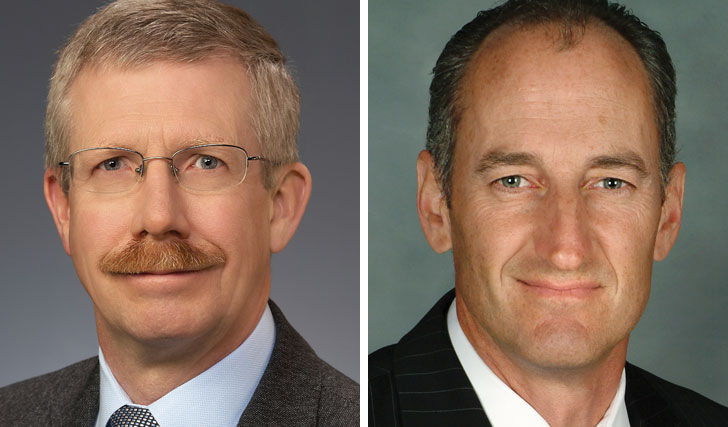Disability insurance is a product that many average advisors shy away from selling, for a number of reasons: Underwriting traditional products is complicated and more clients are declined or rated than is normally the case for regular life insurance sales.
Simplified products, however, are gaining ground, giving more advisors the opportunity to cross-sell disability insurance to the growing number of clients who aren’t covered by workplace sponsored disability plans.
Neil Paton, president and chief executive officer of Edge Benefits says a lot oftraditional disability products were developed at a time when career agencies spent resources training agents specifically to sell the product. “When we created the products that exist today, we created them in a world where we had proprietary sales people who were selling the product. They were trained to sell disability and they were reasonably good at it,” he says. “The problem is when all those career companies went away, the dedicated career forces that went along with them went away. Unfortunately the complexity of the product didn’t go away.”
Because of this complexity, where underwriters must consider morbidity, injury, illness and a client’s financial situation, today traditional sales are often handled by just a few agents who specialize in selling the product.
“The disability business has always been kind of concentrated in the hands of a few advisors. They specialize and they do large volumes,” says David Stewart, Financial Horizons Group’ president and chief operating officer of MGA services and the Ontario region. “Disability insurance requires an extra skill set from an advisor. The underwriting is a little more sophisticated.”
To grow the number of advisors who sell the product, Paton’s business partnered with six Managing General Agencies in the past year, to create a strategic distribution alliance of companies which sell Edge Benefits’ simplified proprietary disability products.
“The Edge is doing something different than most product manufacturing companies,” says PPI Solutions Inc. president and chief executive officer, Jim Virtue. “They have basically approached distribution differently. Most companies go out there and have 20 or 30 or 40 MGAs. They’ve decided to focus on the top five and have a much deeper, more meaningful relationship with them.”
Companies providing the simplified issue, “blue collar” products include PPI Solutions, HUB Financial Inc., Financial Horizons Group, IDC Worldsource Insurance Network Inc., Customplan Financial Advisors Inc. and Bridgeforce Financial Group Inc.
Paton says his goal is to get more advisors routinely asking their clients if they have group benefits and if they have disability insurance as part of their plan. “Most of our successful advisors today are the ones who have learned to ask those questions. They ask every single time they meet with a client,” he says. “We’re trying to change the way simplified living benefits are provided in the market place. It’s exciting, but it’s a lot of work to get there. It’s a complimentary way to try and reach more people that are not being served by traditional models today.”
According to a recent survey by RBC Insurance, advisors who are interested in selling disability products could find themselves working with an untapped market that is bigger than they realize: RBC found that the number of Canadians who have disability coverage through their workplace has fallen significantly. They say only 48 per cent of those surveyed had employer-sponsored coverage, down from 57 per cent in 2015. Of those who have no coverage, 35 per cent say their workplace doesn’t offer group benefits or disability insurance, 25 per cent work part time or on contract and aren’t eligible for benefits and 22 per cent say they were self-employed or working on a freelance basis.
Sales somewhat flat
Despite this trend, Stewart says disability sales today remain somewhat flat and consistent. “Our disability business is not declining as an overall market share but it’s not growing its percentage either. The Edge product is definitely gaining traction in our space because there’s more simplified underwriting. It’s a blue collar kind of product; it’s not a specialized, professional product you would get for a lawyer or an accountant. Those higher quality products demand a lot more sophistication on the underwriting side. In the middle market we’re able to make some sales because we’re not adding a lot of complexity to the program,” he says. “The underwriting is fairly straight-forward making it easier for the consumer to purchase and for the advisor to fill in enough information to get a qualified response.”
For those who are interested in selling more disability insurance, Stewart recommends advisors segment their client base to understand the market, before matching up with an appropriate education program.
In addition to Edge Benefits’ programs, Financial Horizons also runs regular disability workshops developed in partnership with the different disability carriers who serve the company. At PPI Solutions, Virtue says the company is currently developing a full day class on disability insurance for the company’s Knowledge Program series.
To help advisors who are interested in selling his products, Paton says Edge Benefits runs roughly 30 seminars twice a year – in the spring and the fall – followed by a series of webinars in June. Instead of focusing on a handful of specialist producers, Paton says the education is designed for virtually anyone who is licensed to sell insurance.
“We talk about getting someone comfortable enough to open a living benefits conversation (with clients). We give them really basic tools,” he says. “I think that’s what’s holding people back. They’re afraid to begin the conversation. The key we’re trying to teach in our seminars is how to get over that obstacle.”
“When you start in the life insurance business, there’s a fairly rigorous training program that allows people to succeed. On the disability side it’s not the same. We’re trying to re-create that in the industry by doing a significant number of webinars and seminars.”
To learn enough to sell the product, he says it can take 10 to 12 hours of training and one on one consultation with the company before an advisor reaches the basic level of comfort and confidence needed to provide a professional level of service to would-be disability clients.
“We don’t expect them to get there with one session. We have at least 10 to 12 hours of decent content that can help them learn how to open up a conversation, or how to make a plan affordable. You name it, we have all kinds of presentations.”
Simplified products
The “intentionally simplified” products, including some guaranteed issue solutions, are also designed to be easier for novice disability advisors to sell. Edge Benefits says 75 per cent of all its business is done electronically. Of those applications completed electronically, almost half are completed by clients who are working remotely with their advisor. “We’re way ahead of the industry on that,” Paton says. “Our challenge is to get more people aware of the simplicity of our electronic application and to help people understand how easy it is.”
“If you ask those questions every time you sit down with a client – ‘Do you have a benefits program?’ And ‘do you have disability in your benefits plan?’– you’ll force yourself to learn,” he adds. “We will help you get into the marketplace.”
Double digit growth
In 2017, Paton says Edge Benefits had a phenomenal year, experiencing 22 per cent growth overall. Although growth in 2018 has been a little more muted so far, he says the company is still on track for growth in the double digits. “We’re happy with that. We’re ahead of plan,” he says. “The other thing we measure is the number of new advisors who do business with us. That’s up almost 10 per cent as well. And that’s only the tip of the iceberg.”
Despite their work to reach a larger audience and the mass market they serve, getting past the thought that only a select few specialists would be interested in selling disability continues to be a challenge, as well. Where Paton and his team would like to speak with all advisors contracted to the MGAs they serve, some continue to put forward only a small number of advisors to work with. “That might be good in the traditional market, but it’s not necessarily good for us. Our approach works better if we simply reach out to the entire population,” he says. “We’re finding the simplified space is really growing. It’s a great way to get people started in the industry.”










